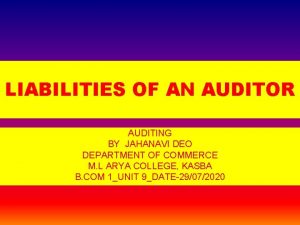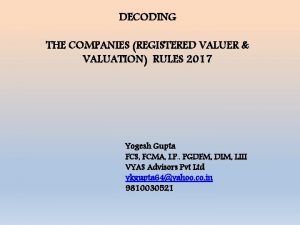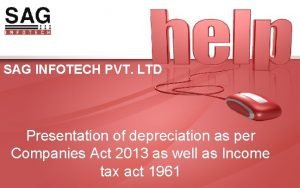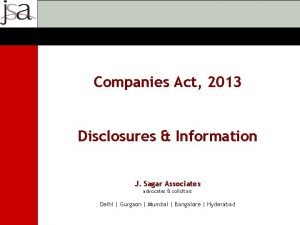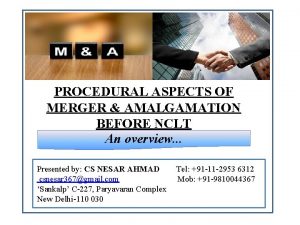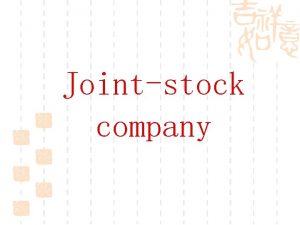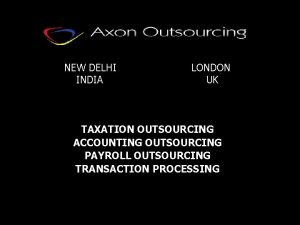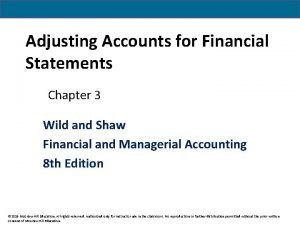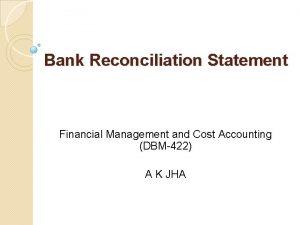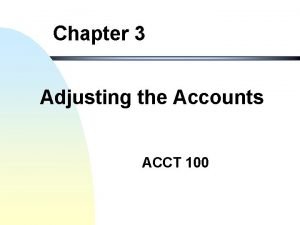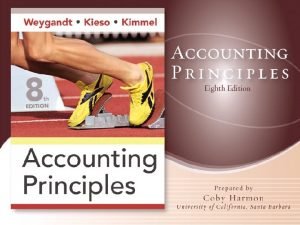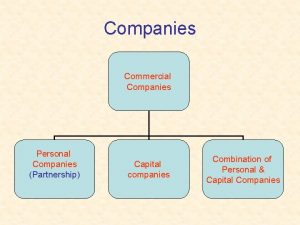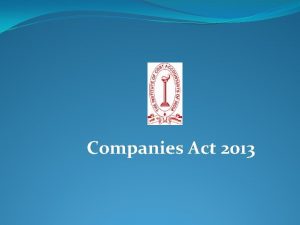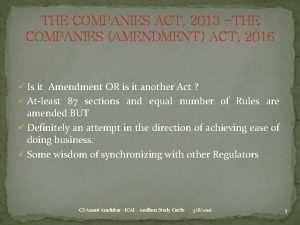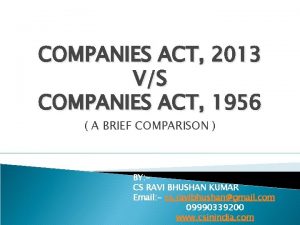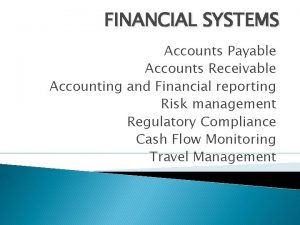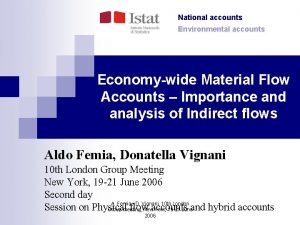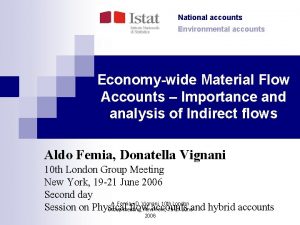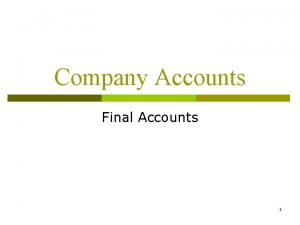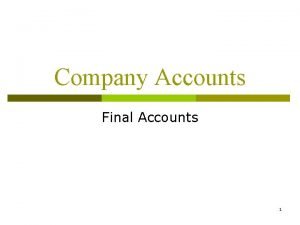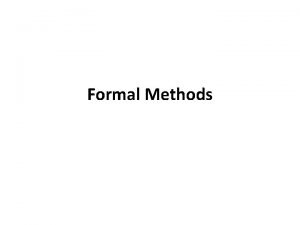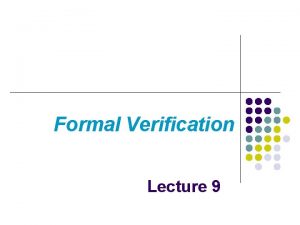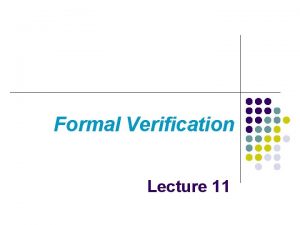Financial Accounting Formal Accounts The Companies Act Accounting


















- Slides: 18

Financial Accounting

Formal Accounts • • The Companies Act Accounting rules and regulations Whether the company is listed (i. e. is a plc) Company size

Companies Act of 1985. This act specifies the minimum information that must be included in the accounts that are filed at Companies House. • Statutory obligation to prepare annual accounts • Accounts must be 'true and fair' representation • Audited by an independent, practicing accountant.

Accounting Principles • • Matching or Accruals Principle Prudence Going Concern Materiality

Matching / Accruals • Revenues and Costs are recognised as they are earned rather than as cash is received or paid. • Applies to all Limited Companies • Now a statutory requirement (SSAP 2) resulting from Companies Act 1985

Prudence • Accounts should always be conservative • No profit should be recorded until it is realised • All losses should be anticipated as soon as possible • A counter to the optimism of typical businessmen

Going Concern • Accounts are required on a periodic basis • Accounting Period • The entity will continue to trade profitably • Different measurement rules apply to limited life entities

Materiality • Only items that are financially significant need be considered • Accounts need to be practical in size Absurdity is not mandatory

The Accounts • • The chairman's statement Director's report Auditor's report Profit and Loss account Balance sheet Cash flow statement Notes to the accounts

Chairman’s Statement • the organisation's mission and strategy • general business plans • a summary of the overall trading performance compared to the economy and the business sector • what the future holds • any special interest items or events that occurred during the year such as mergers and acquisitions

Director’s Report • principal activities of the organisation • proposed disposition of the profit showing how much will be paid in dividends and how much transferred to reserves • major changes in the fixed assets or their value • directors, directors' interests and shareholdings • any changes in the directors

Director’s Report • equal opportunity and minority group employment policies • any donations to political parties or charities if over £ 200 • personal liability insurance taken out for directors or auditors • the status of the company • the appointment of the auditors

Profit and Loss Account • How worth has changed over a period of time • Dynamic measure of organisational performance

Profit and Loss Account Income Expenses Net Profit Interest & Tax OWNERS MONEY

Profit and Loss Account Income Expenses Net Profit Interest & Tax OWNERS MONEY Sales Revenue Turnover Trading Income

Profit and Loss Account Income Direct Expenses: • Production Labour • Materials Expenses Net Profit Interest & Tax Indirect Expenses: OWNERS MONEY • Sales Marketing • Development & Engineering • Management

Profit and Loss Account Income Expenses Net Profit Interest & Tax OWNERS MONEY Interest on Capital Loans + Taxation !

Profit and Loss Account £ (000) Sales Revenue 25. 5 Cost of Sales 13. 3 Gross Profit 12. 2 Overheads 6. 0 Net Profit (PBIT) 6. 2 Interest 2. 4 Profit Before Taxation 1. 6 Profit After Taxation 2. 2 3. 8
 Financial accounting chapter 1
Financial accounting chapter 1 Social responsibility accounting ppt
Social responsibility accounting ppt Criminal liabilities of an auditor
Criminal liabilities of an auditor Appointment of registered valuer under companies act, 2013
Appointment of registered valuer under companies act, 2013 Companies act fiji
Companies act fiji Depreciation on air conditioner as per companies act
Depreciation on air conditioner as per companies act Website disclosures under companies act 2013
Website disclosures under companies act 2013 Companies act no 7 of 2007
Companies act no 7 of 2007 Can backdated udin be generated
Can backdated udin be generated Section 230-240 of companies act 2013
Section 230-240 of companies act 2013 Jointstock
Jointstock Uk accounting outsourcing companies in india
Uk accounting outsourcing companies in india Act 1 act 2 act 3
Act 1 act 2 act 3 Fees earned debit or credit
Fees earned debit or credit Chapter 3 adjusting accounts for financial statements
Chapter 3 adjusting accounts for financial statements Financial algebra workbook 2-1 checking accounts answers
Financial algebra workbook 2-1 checking accounts answers What is reconciliation statement in cost accounting
What is reconciliation statement in cost accounting Adjusting the accounts chapter 3
Adjusting the accounts chapter 3 Adjusting entry accrued expense
Adjusting entry accrued expense


